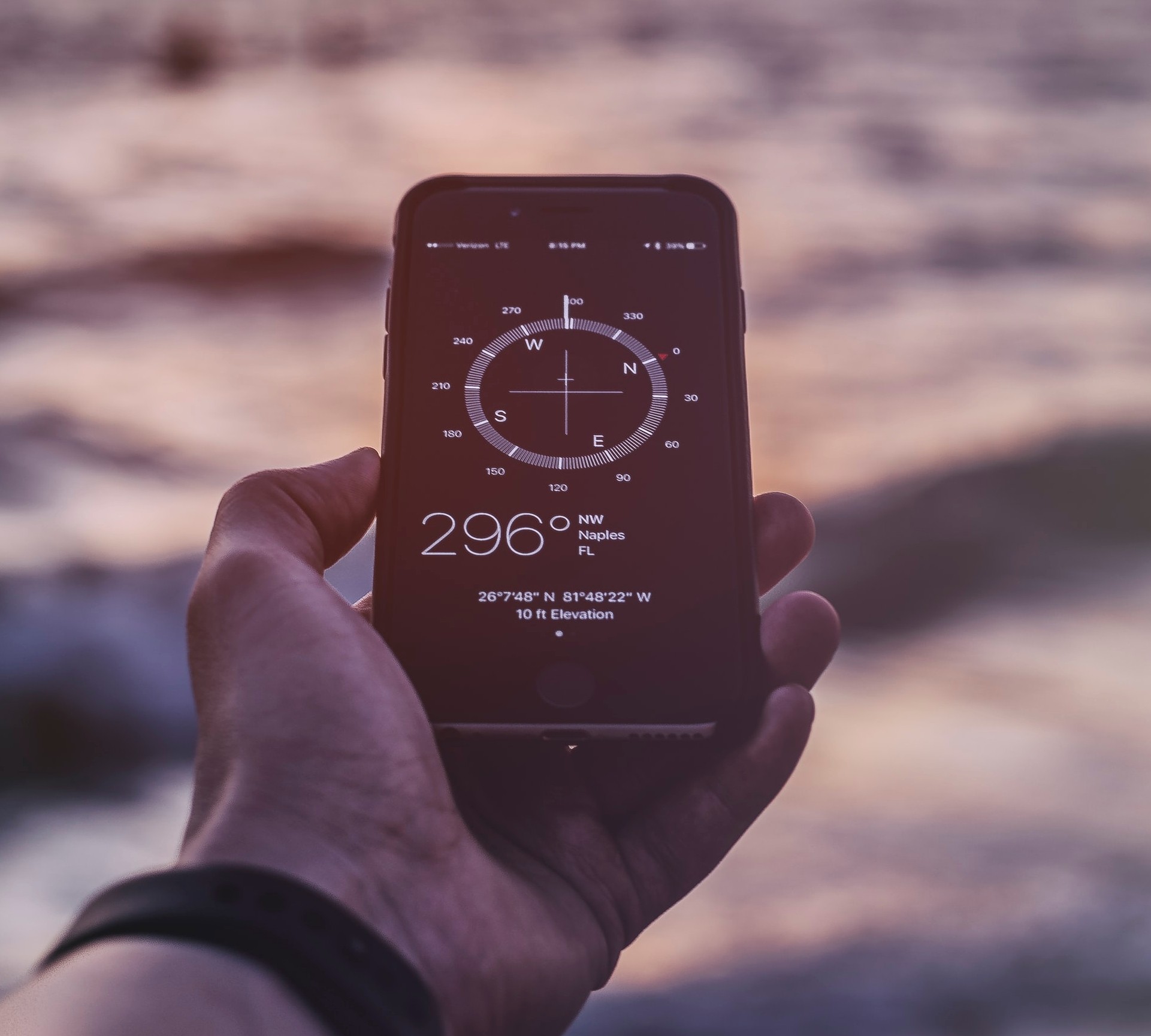Location has become an indispensable part of our everyday life. We tag Instagram photos to show cool locations we’ve been to. On Facebook, we check-in to our favorite coffee place. We share our location with restaurants to get food delivered. Almost 1/3 of our mobile searches are location-related. It’s no wonder marketers are turning to location-based mobile marketing to target customers and get more sales. So if you want your businesses to thrive, you need to start using location-based mobile marketing techniques. In this article, I will explain everything you need to know to get started.
What Is Location-Based Mobile Marketing?
Location-based mobile marketing utilizes different techniques to target users based on their location. The most common ones are geo-fencing, geo-conquesting, and proximity marketing. Each of these techniques uses different technologies to target users, some of which are GPS, IP address, and beacons. When a user is in a certain location, automated messages and ads get triggered.
Location-based mobile marketing aims to grab the users’ attention and hopefully turn them into customers. You do that with ads that are location-specific and relevant to the user. Your chosen audience receives notifications on their smartphones or tablets. Location-based ads can also show up if a user conducts a “near me” search.
What’s important to note is that users first need to opt-in to receive notifications. This includes allowing the app to access their current location. Privacy is a big deal when it comes to location-based marketing.
People are already scared of companies stealing their data and surveilling them. So first, make sure you always get all the permissions. Otherwise, users will see you as untrustworthy. And that’s not how you want to be perceived.
Why Is Location-Based Marketing So Attractive to Marketers?
We spend A LOT of time on our phones every single day. That’s just a fact. We can lie to ourselves and pretend that we’re not constantly staring at our phone screens, but let’s be honest… We can’t longer live without our phones.
And what’s interesting is that we increasingly use mobile devices to access the Internet. In fact, the World Advertising Research Center predicts that by 2025, ¾ of internet users will access it using their mobile devices.
Marketers are very aware of that fact. That’s why so many marketing strategies focus on mobile. Location-based mobile marketing takes advantage of the fact that people are constantly using their phones. It means users can be reached anywhere and anytime.
What for Do Marketers Use Location Data?
Marketers love location-based marketing because it allows them to provide the users with relevant and personalized offers and messages. Factual reports that “84% of marketers currently use location data in their marketing and ad campaigns, and 94% plan to in the future.”
Here what most marketers use location data from their advertising campaigns for:
- Targeting
- Increasing audience engagement
- Enhanced user experience and personalization
- Campaign strategy
- Audience insights
- Audience segmentation
- Tracking and attribution
As a result, many companies have experienced massive success with location-based mobile marketing. And that’s no surprise. It is data-driven, personalized, and relevant to the user. As a result, businesses see an increase in engagement, conversions, and sales.
In a survey done by Statista, 89% of marketers say the top advantage of using location-based marketing is sales. Moreover, Businesswire’s report shows location-based advertising campaigns are twenty times more successful than those that are not location-specific.
According to Grand View Research, the global location-based advertising market was worth 62.35 billion in 2019. From 2020 to 2027, this number is predicted to grow at a 17.4% rate!
Generally, location-based mobile marketing enables marketers to reach people at the right time with the right message. And that’s the perfect recipe for a successful advertising campaign.

What Technologies and Techniques Are Employed in Location-Based Mobile Marketing?
Let’s get into specific techniques used in location-based mobile advertising. I’m going to break down each one and explain how they work.
Geo-Fencing
Geo-fencing refers to setting a virtual fence around a specific location with technologies such as GPS, IP address, or RFID. The goal is to show location-specific ads to users who enter that geographic boundary.
For example, a store owner can set a digital boundary around the area of the store. When users get within that radius, the store can send them a notification, an offer, or a discount.
However, the issue with geo-fencing is that it doesn’t consider user demographics. So when using geo-fencing, every user that enters that specific location will get an alert. That means the notifications will be generic and irrelevant to many.
Nothing kills engagement more than content that’s not relevant or interesting to the user.
Let’s say you own a kid’s clothing store. You use geo-fencing to set a virtual fence around your store and send a discount to everybody who enters that location. Yes, a lot of people who have kids will get that discount.
As a result, they might come to your store and purchase something. But many people who don’t have kids and are not interested in kid’s clothing will also get it, just by being in that area. In that case, you have targeted the wrong people and won’t get any results.
If your goal is to only target the users who meet your criteria, you will get much better results with geo-targeting.

Geo-Targeting
Geo-targeting uses the same location technologies as geo-fencing. However, unlike geo-fencing, geo-targeting allows you to target users based on demographics, interest, behavior, and even their purchase history.
This results in ad campaigns that are tailored to your target audience. (If you want to learn how to determine your target audience for a successful mobile marketing strategy, click HERE.)
So instead of targeting anyone who enters a specific location, you target audiences that fit your exact criteria.
For example, you can target men over 30 in the Manhattan area interested in cars. Or you can target users who have visited your store in the last 90 days and are currently in the area.
Urban Outfitters is a big brand that uses geo-targeting well. In one campaign, they promoted party dresses through push notifications in their app. Who did they target? Women who have recently been to a nightclub or bar.
The results?
Conversions increased by 75% and revenue by jaw-dropping 146%!
So it shouldn’t come as a surprise that according to Statista, location-based mobile ad spend will grow to $32 billion in 2021.
The key is to provide users with a contextual and personalized experience. People expect you to understand them, anticipate their needs, and offer relevant solutions to their problems. All location-based mobile marketing trends are heading in that direction.

Geo-Conquesting
This is where location-based mobile marketing gets fun. Did you know that you can literally steal your rival’s customers? Yep, it’s a sneaky move, but as they say, all is fair in love and war… And marketing.
The goal is to set a virtual fence around your competitor’s location and target their customers with ads depicting your products/offers as better.
One of the most famous geo-conquesting campaigns comes from Burger King. Remember that time when they trolled their rival McDonald’s? I’ll explain.
The “Whopper Detour” campaign used geo-conquesting techniques to target users within 600 feet of McDonald’s locations. Users entering the perimeter triggered a notification that gave them a coupon for a one-penny Whopper. Plus, they would receive directions to the nearest Burger King.
Ingenious, right? Do I even have to mention that the campaign was a huge hit?
An example of another successful campaign was Whole Foods, which was a combination of geo-fencing and geo-conquesting location-based marketing tactics. Whole Foods, in collaboration with Thinknear, placed geo-fences around their stores.
Moreover, the company made targeted ads and special offers to users passing by. The geo-conquest part was done by placing geo-fences near competitor stores’ locations, informing users of Whole Foods’ proximity, and leading them to the nearest Whole Food store. The geo-conquest part, in this case, referred to other stores that sell healthy food or are health-oriented.
Proximity Marketing
The main difference between proximity marketing and other location-based techniques is the targeting radius. While geo-fencing allows you to target huge areas such as an entire city, proximity marketing is perfect for small areas within 200 ft.
It’s very precise and allows you to know users’ exact location, even if they’re indoors. Technologies used for proximity marketing include Bluetooth beacons, NFC, RFID, Wi-Fi, and QR codes.
Proximity marketing works best for events, museums, bookstores, car dealerships, department stores, etc. You can guide users through your store or give out very personalized offers.
A great example is a proximity marketing campaign from Barneys New York, a department store. Users who enable push notifications and location info get personalized offers and recommendations for nearby activities and attractions. It drives sales and keeps users in the area.
This is how Barneys approached proximity marketing – once the users would grant the app access to their location, they would receive notifications based on their wish lists or shopping bags.
Also, users’ notifications were customized to match their most recent search history on The Window, Barneys’ publication. When it came to the recommendations for nearby activities, Barneys would provide their users with nearby dining and sightseeing recommendations.
What made this marketing campaign so successful was the fact that Barneys customers would feel like the offers were personal to them. Also, the dining recommendations worked out to balance the advertising part, so it doesn’t feel too pushy. Finally, Barneys made proximity marketing work by making the users feel like they are not even experiencing ads.
Disadvantages of Using Location-Based Marketing
With all of these reasons why someone should use location-based mobile marketing, there are some disadvantages to list as well.
Location Opt-in
The first and probably most obvious one is the location opt-in requirement. Obviously, in order to use the location technology, the users have to enable this feature on their devices. And since many people have privacy concerns, they cannot be targeted this way.
It is important to know that when it comes to Android devices with the location opt-in turned off, Google tracks this information anyway. If the user wants to turn this feature off completely, they have to manually configure the settings on their smartphone.
Data Privacy
Ensuring user data privacy is becoming more important by the day. You’ve probably heard about regulations like GDPR and CCPPA. You have to make sure you are staying in line with them. The thing is, these regulations are constantly changing. You definitely don’t want to earn a fine for something like that.
Non-Segmented Targeting
If you’re relying on location targeting and using a technique like geo-fencing, there is a higher chance you will waste your budget. If you have a big audience in a particular area, this doesn’t necessarily mean you have the right audience. For most businesses, it is a better idea to use the geo-targeting technique that segments the users in a specific location to smaller groups. Therefore, make sure to avoid this common mistake and use additional targeting to find and filter out uninterested users from seeing your ads.
Inaccurate Location Data
When a user enables VPN features on their mobile device, this can cause disruption in geolocation targeting. Due to this, if the users start seeing inappropriate ads, it can be a complete waste of budget.
To Summarize Location-Based Mobile Marketing
Location-based mobile marketing can be a game-changer for your businesses, no matter how big or small it is. When you send users personalized offers based on their location, conversions and revenue go up.
People want relevant content tailored to their needs, and they don’t mind sharing their location to get it. Local Search Association reports that 70% of users have no issue sharing information about their location if they get something valuable in return.
So utilize different location-based techniques like geo-targeting, geo-fencing, and proximity marketing to get more conversions and increase revenue.
Need more help with location-based mobile marketing techniques? Ask anything you want to know in the comments below.







Comments